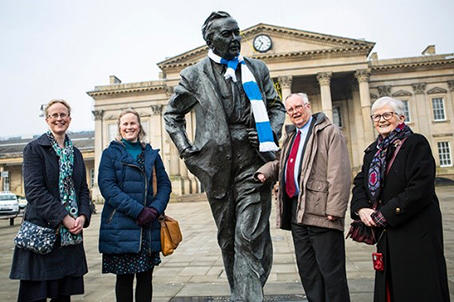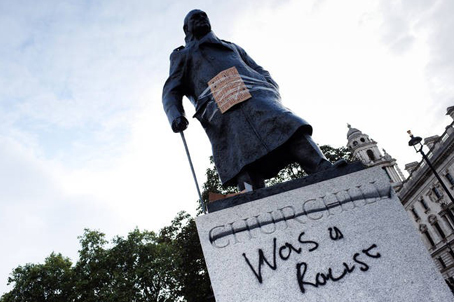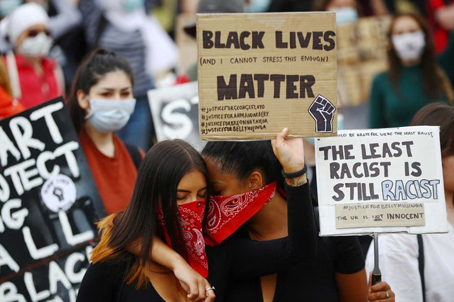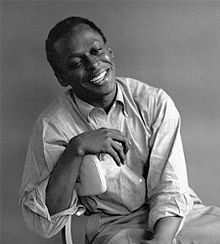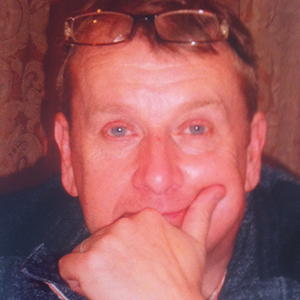
Dr Chris Cameron
Behavioural Scientist
…considers the recent events around the Black Lives Matter protests and the role education and the social sciences should play in helping challenge ‘existing’ knowledge and embracing change and new ideas
“Today, as I walked towards the railway station in Huddersfield, I saw the statue of former Prime Minister Harold Wilson. Unlike some others I have seen, it isn’t very imposing. Set just above ground level, it doesn’t gaze imperiously down on me from on high. Lord Wilson seemed somehow amicable and accessible. People stopped and looked, some took a photograph or two. Others get in the photo, giving Lord Wilson a football scarf to wear, and somehow it didn’t look out of place.
Returning home, I checked my phone and saw a video sent from a friend showing the events unfolding in London, where a Black Lives Matter protest targeted a statue of another former Prime Minister, Sir Winston Churchill, attaching a placard and adding the words ‘was a racist’ to the pedestal on which his monument stands. Thanks to social media, it didn’t take me long to discover that in many places and around the world, statues were being defaced and some were falling. We live in strange and uncertain times, don’t we? But perhaps we could have some sympathy with Voltaire when he suggests ‘doubt is an uncomfortable condition but certainty is a ridiculous one.’
The protests occurring on our streets show us unequivocally that is important to consider why statues fall and are defaced, and to contribute in a modest way to the wider debate that is currently raging. To this end, it may be helpful to utilise sociological thought, so I will turn to that discipline for insights, rather than answers. It is important to remember here that sociology is, or more properly should be, a critical discipline. That means not everyone will feel comfortable with the insights it produces. At the uncomfortable conclusion of this piece, we will be grappling with concerns about the link between knowledge and power, or more properly between knowledge, the application of power and its effects.
Placed in prominent positions, often towering over us to the extent we can barely see the figure portrayed, these larger than life representations of ‘famous and important people’ can be seen in many of our towns and cities. Some monuments become so familiar that we pay little heed to them. We may not remember the person they portray at all. They are reduced to landmarks, mere objects that people use to navigate by. We may turn left at the statue, or meeting other people beneath it. Whilst we may think of such public architecture as something in the background of our lives, these statues still have a particular significance because of their meaning to us.
Some architecture has a meaning that is seemingly so very offensive that it must be erased from the landscape. For example, Adolph Hitler’s former home in Austria was regarded as a distasteful focus for ‘Nazi tourism’ or worse, as a shrine for those who admired both the man and his abhorrent and racist beliefs. At first, a memorial stone was situated in front of the building, commemorating the victims of World War II which is inscribed ‘Für Frieden, Freiheit und Demokratie. Nie wieder Faschismus. Millionen Tote mahnen (For peace, freedom and democracy; never again fascism. millions of dead remind us). This was clearly insufficient as the Austrian government expressed the intention to tear down the building and replace it with one that had no association with Adolph Hitler, although this stance was later softened to ensure the building would be changed beyond recognition and remodelled as a police station. Architecture it seems, if deemed sufficiently offensive, can be removed, or at least, significantly remodelled beyond attaching a plaque.
Until recently, those statues to people who formerly expressed racist views were used for infrequent commemorations or ignored. So why suddenly did they take on a renewed importance? Well, sometimes events that take place far away raise our awareness and give us cause to look anew. The murder of George Floyd, a black man, at the hands of white police officers whose duties were to protect him, regardless of whether he was a criminal, sparked outrage not just in America but around the world. This was not an isolated event and it served as a reminder to us all of an inglorious past in which the value of black lives was diminished. Protest spilled on to the street, where again the police were criticised for their use of violent suppression. In the UK, the protests escalated as ever more people joined Black Lives Matter protests that were argued to be becoming increasingly disruptive and unruly.
Analysts in the UK were quick to identify the reasons for the protests. They cited the visibility of a disproportionately violent police response, alongside some of our most inglorious recent past, such as a perceived failure to act to protect Black and Minority Ethnic community members from Covid-19, the Windrush scandal and the tragedy of Grenfell Tower, all of which seems to demonstrate a lack of concern for black lives. So, now the world around us refocused through the lens of that historic, and evidently present-day lack of concern for black lives. Statues become potential symbols of that past and its presence today.
Collectively though, we could be said to have a kind of ‘double vision’. A good many folks will see defacing and displacing statues as acts of vandalism and disrespectful to not just the person portrayed or the great deeds they once performed but perhaps to a nation, despite some of those deeds being evidently inglorious. Others however will see the same statue very differently, as a symbol of discrimination and oppression. Clearly, what statues represent means different things to different people. But simply engaging in the debate about whose view is right merely distracts from more salient issues of how these views are made and sustained. Now, sociology tells us our views are inextricably linked to what we know. Some know only of past glories, victories and achievements. Here, the statues represent those people who embody British values and are sources of national pride. However, others know, some only too well and greatly to their cost that in the past, the value of black lives have been diminished by the actions of powerful white individuals and the institutions these statues represent. That knowledge informs their view, and they see many of these statues as very visible representations of the subjugation of black lives.
Clearly knowledge is a powerful thing. Francis Bacon said as much in 1597 in his statement ‘ipsa scientia potestas est’ (knowledge itself is power). Statues, once inert and silent, can be thought of as representing, for each of us, a particular way of knowing. But Michel Foucault takes the next step and reminds us that knowledge produces, and crucially, reproduces power relations:
'there is no knowledge that does not presuppose and constitute at the same time, power relations.’
In this sense, statues can be argued to be to be attempts to fix and visibly represent one single, unitary way of knowing because:
‘knowledge linked to power not only assumes the authority of 'the truth' but has the power to make itself true’.
Yet we readily recognise that knowledge may be partial, and truth contested. Now we can see that statues constitute sites of contested knowledge, truths and a set of power relations whose effects still privilege some and continue to define and diminish the value of black lives. Many others will recognise this kind of disempowerment in their own lives, including women and the LGBTQ+ community for example. Drawn together by a common sense of purpose, protests grow and statues are defaced and fall.
But these statues symbolise more than that contestation. To leave the analysis there would do a great disservice to the cause of making black lives matter and forging more empowering ways of knowing about the world. Those statues don’t just (as if that is not enough) symbolise inequitable power relations and their effects, their presence in our towns and cities potentially represents the continuation of those relations and thus many argue they should fall.
I would want to go further, because taking a critical sociological approach means we must. It is not enough to stand by, or indeed with, disempowered groups. This does nothing to address the knowledge that produces disempowerment. Merely removing these statues or consigning them to museums is not enough. This partitions off knowledge, perpetuating our double vision by making new forms of knowledge available only to those who can, or perhaps more importantly will choose to visit them in their new homes. It is not enough to erect new statues that may embody new ways of knowing, because this alone is unlikely to dissemble existing knowledge and result in the widespread acceptance of more empowering ways of knowing.
Undoubtedly, any attempts to address this uncomfortable link between knowledge and power will also be resisted by some whose empowerment gives them privilege. Already, we are seeing those attending Black Lives Matter protests being condemned as radical or dangerous and protesters instructed to stay at home. But privilege in itself is not always a problem. Privilege can and should be harnessed wherever possible to facilitate positive and empowering change. Here I want to emphasise the role of the privileged institutions of education in general and the social sciences in particular in facilitating such change. That means making the social sciences go beyond simply explaining and pushing them toward using privilege to facilitate change.
This is not to suggest that, through education, the social sciences should dictate a new understanding of the world and replace one tyranny with another. Instead they should pursue their existing ethical agenda with renewed vigour, by encouraging a new generation of people of all kinds to engage in questioning powerful forms of knowledge; in Foucault’s terms to ‘refuse to accept as self-evident the things that are proposed to us, to analyse and to know in different ways and to seek out in our reflections those things that have never been thought or imagined’. Or alternatively in Voltaire’s terms, maybe a good dose of doubt, rather than our ridiculous certainties, would be good for us all!
I want to argue that those in education, and particularly those involved in the social sciences, have a duty not to offload this task on to already disempowered, burdened and often fragmented communities, but to embrace it on behalf and to the benefit of such groups. The task is to provide the means to express a powerful voice on behalf of silenced groups, to make visible new knowledge and offers alternative knowledge that challenges, albeit uncomfortably, the knowledge that many hold as uncontestably true today. Black musician Miles Davies experienced prejudice and discrimination throughout his life and career. In a famous interview, he reminded us all that ‘knowledge is freedom and ignorance is slavery’.
In short, education and the social sciences should equip a new generation with the tools to challenge existing knowledge and taken for granted ‘facts’ around the issues faced every day by all disempowered communities and individuals. Change those, and we may change the world into one where black lives do matter.”
Human Behaviour
Browse all our blogs related to Human Behaviour.
Politics
Browse all our blogs related to Politics.

